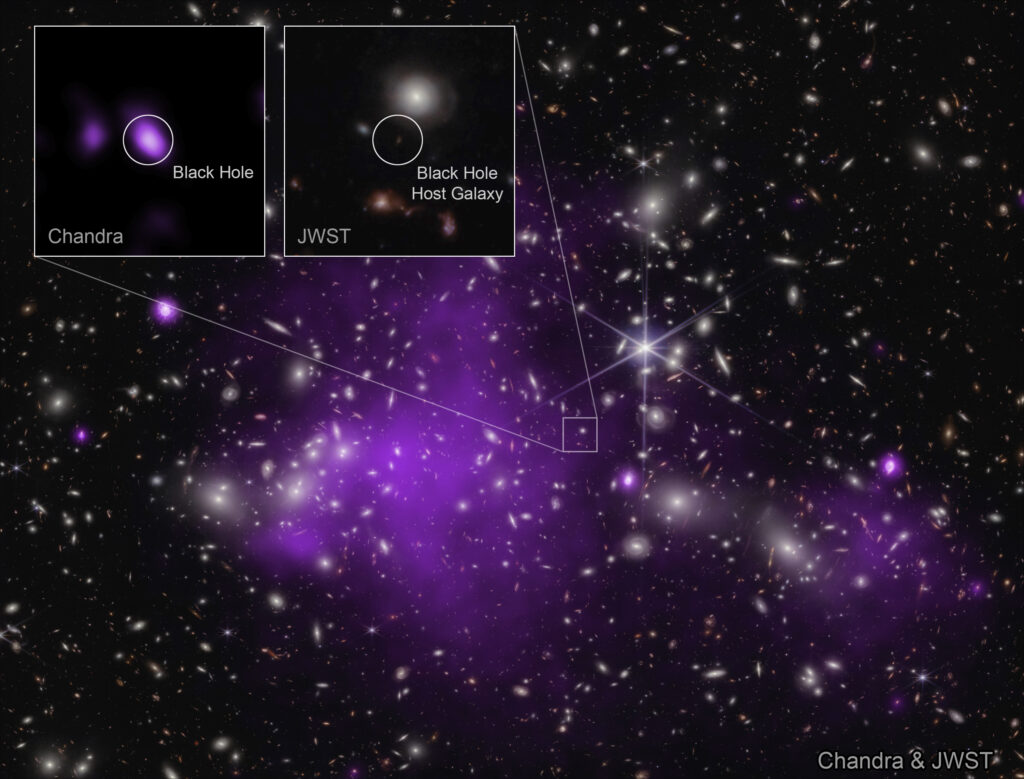Thanks to the Chandra and James Webb space telescopes, astronomers discovered the most distant black hole observed in X-rays. It is in the stage of active growth, and its mass is similar to that of the native galaxy.

The discovery was made during observations of the UHZ1 galaxy. It is located in the direction of the galactic cluster Abell 2744, located 3.5 billion light-years from Earth. However, after studying the data collected by JWST, astronomers found that UHZ1 is actually much further away. The light emitted by the galaxy was amplified by the powerful gravity of the cluster, which acted as a giant lens.
Subsequent measurements showed the UHZ1 galaxy as it was just 470 million years after the Big Bang, when the age of the Universe was 3% of the current one. Astronomers took advantage of this circumstance to study this galaxy in more detail. Two-week observations with the Chandra telescope showed the presence of superheated gas in it. This gas is a source of X-ray radiation, which is a sign of a growing supermassive black hole.
Astrophysicists have long been looking for an answer to the question of the mechanism of the formation of the first colossal black holes in the Universe in a relatively short time. In this regard, some scientists believed that they did not arise from the explosions of the first giant stars but as a result of the gravitational collapse of massive gas clouds. The first mechanism allowed the formation of holes with a mass of 10 to 100 solar, while the second — from 10 thousand to 100 thousand solar.
The available data indicate that the black hole in UHZ1 has already been massive. Its mass, judging by the brightness and energy of X-rays, is from 10 to 100 million solar. This is similar to the mass of all the stars in UHZ1, which contrasts sharply with the black holes in the centers of galaxies in the Universe. They usually contain only tenths of a percent of the mass of the stars in their galaxies.
According to the researchers, all this confirmed the assumption that some of the first black holes were born from massive gas clouds. They plan to use these and other data collected by JWST and other telescopes to create a more complete picture of the early Universe.
According to https://www.nasa.gov
Follow us on Twitter to get the most interesting space news in time
https://twitter.com/ust_magazine
